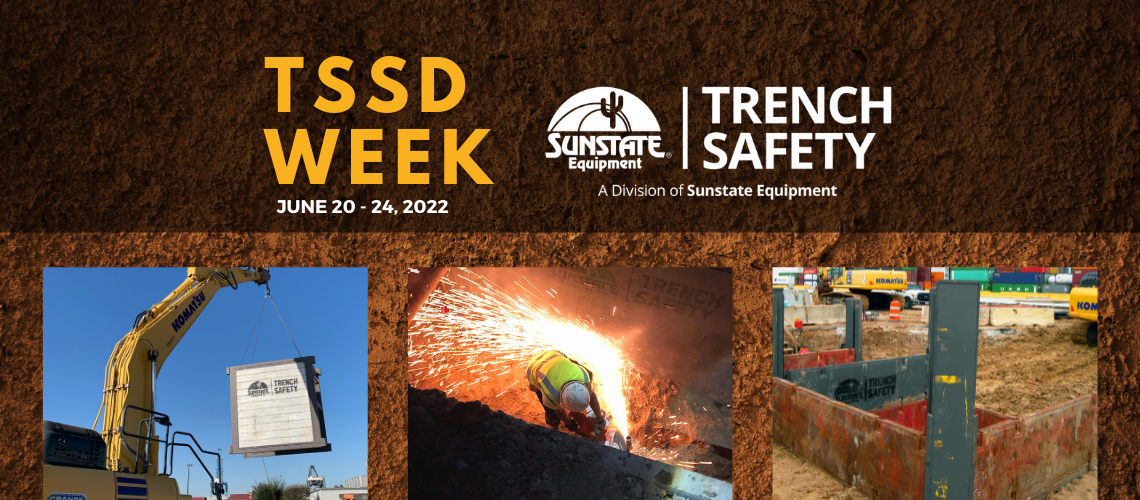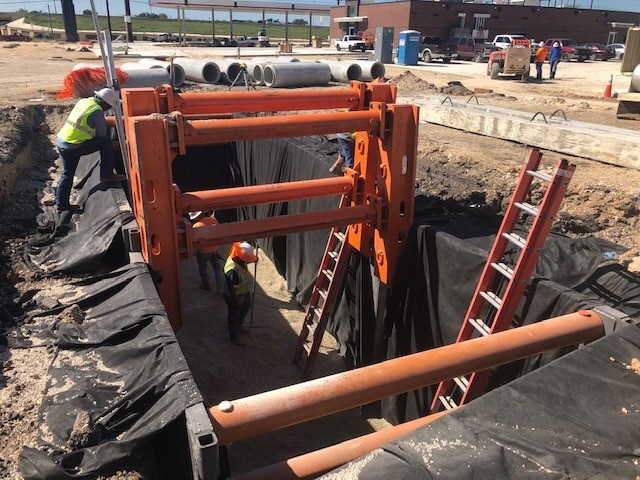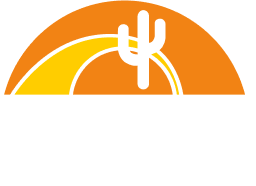Trench Safety Week 2022

TRENCH SAFETY STAND DOWN WEEK: QUICK TIPS TO PROTECT YOUR TRENCH PROJECTS
Did you know a cubic yard of soil can weigh as much as 3,000 pounds? It is no wonder a trench collapse is rarely survivable... or why trench safety is imperative when working belowground.
To help keep trench workers safe, NUCA has declared June to be Trench Safety month, and the week of June 20-24 as Trench Safety Stand Down week. In support of this important initiative, we’ve put together a few safety reminders to help you conduct a safety stand down talk with your team.
INSPECTIONS
OSHA requires daily site inspections by a qualified Competent Person before work begins. Re-inspect trench conditions and stability as needed throughout the shift, and after rainstorms. Rain can alter the soil type, resulting in the need for a different protective system.
The most hazardous dangers are ones often overlooked, such as weather, traffic, and nearby structures. Watch the environment for changes throughout the day. When conditions change, your designated Competent Person must re-inspect the site and take the proper corrective action.

SOIL TYPES
There are four different classifications of soil, each requiring a different trench safety solution.
TYPE A SOIL
Defined as cohesive soil with an unconfined, compressive strength of 1.5 tons Per Square Foot (TSF) or greater.
Examples:
Clay
Caliche
Hardpan
Silty Clay
Sandy Clay
TYPE B SOIL
Defined as cohesive soil with an unconfined, compressive strength greater than 0.5 TSF, but less than 1.5 TSF.
Examples
Angular Gravel
Silt
Silt Loam
Sandy Loam
TYPE C SOIL
Defined as a soil with a maximum unconfined progressive strength of 0.5 TSF
Moist, cohesive soil or a moist, dense granular soil that does not fit into Type A or Type B classification and is not flowing or submerged
Can be cut with near-vertical sidewalls and will stand unsupported long enough to allow vertical shores to be installed
Examples
Gravel
Sand
Loamy Sand
Submerged Rock That Is Not Stable
TOOLS
Naturally, digging a trench requires skill, safety, and the right equipment. For large trenches that are at least 5 feet deep, we recommend an excavator like the Bobcat E145 or a backhoe like a John Deere 710L.
However, the most important tools for a trench project are the shields, sheeting and shores that help keep trench sides intact and reinforced. Proper sheeting helps prevent local raveling or sloughing of the trench face between the vertical shores.
APPROVED SHEETING FOR USE WITH HYDRAULIC SHORING APPLICATIONS
.5-inch or thicker Steel Plate
.75-inch-thick Fin Form
.75-inch-thick Omni Form
.75-inch-thick Combi Exterior Plywood
2 sheets of .75-inch-thick CDX Plywood
Sunstate’s Fin Form Sheeting
Note: Refer to the manufacturer’s tab data for the correct shoring systems to use with the approved sheeting and soil type on each project.
PROTECTIVE SYSTEMS
To shore up your trench sides, choose from these widely used protective systems. An OSHA-Certified Competent Person will be fully trained on how to select the right system for the soil and site conditions. Remember, changing conditions may require a change in the protective system needed.
SLOPING
OSHA considers sloping the safest method. Sloping involves cutting back the trench at a sloped angle that is inclined away from the excavation.
SHIELDING
Shielding is the most common system used according to OSHA. Trench boxes or other types of supports are used to help prevent cave-ins.
SHORING
Shoring supports the trench face to help prevent the movement of soil. Aluminum hydraulic and pneumatic supports are commonly used.
BENCHING
According to OSHA, benching is a type of sloping that is stair-stepped instead of diagonal.
STEPS YOU CAN TAKE TODAY
Set aside time this week for a Trench Safety Stand Down with your trench team. Need more info? Reach out to Sunstate’s Trench Safety Division at (866) 823-3319 for assistance.
Be sure to take advantage of Sunstate’s OSHA-Compliant Competent Person and Confined Space Awareness Training programs to ensure you have the qualified and certified decision-makers on your site for those daily safety inspections.
If you hold a stand-down talk at your jobsite this week, don’t forget to grab your NUCA certificate of participation and hardhat stickers here: https://www.nuca.com/tssd.
©2026 Sunstate Equipment Co., LLC

